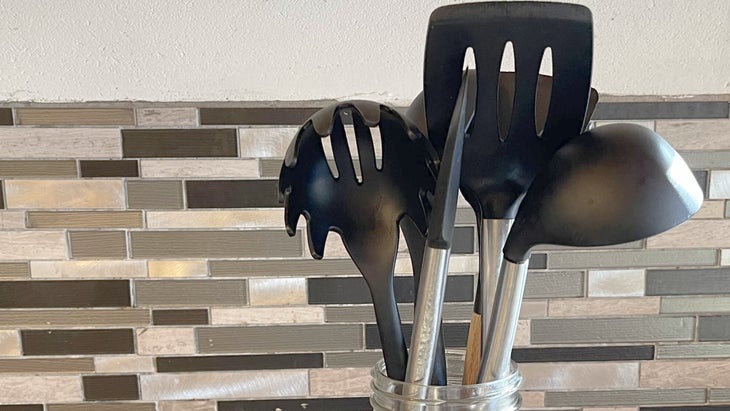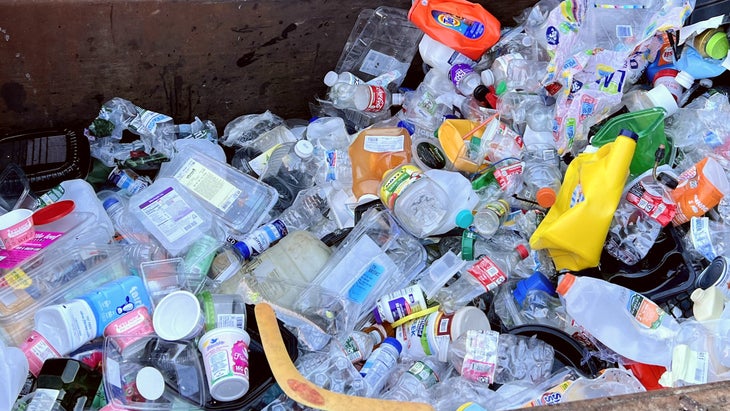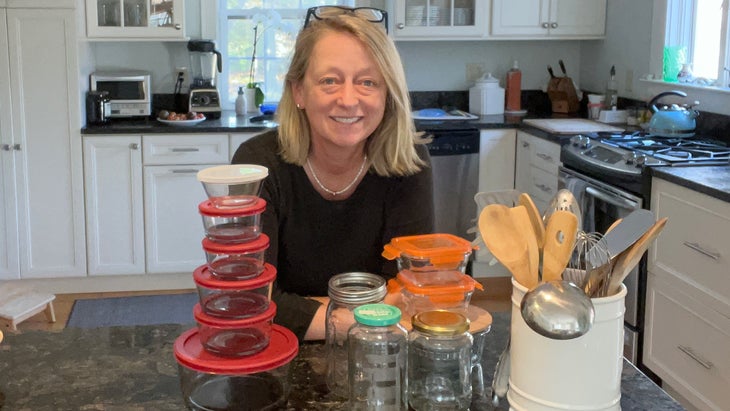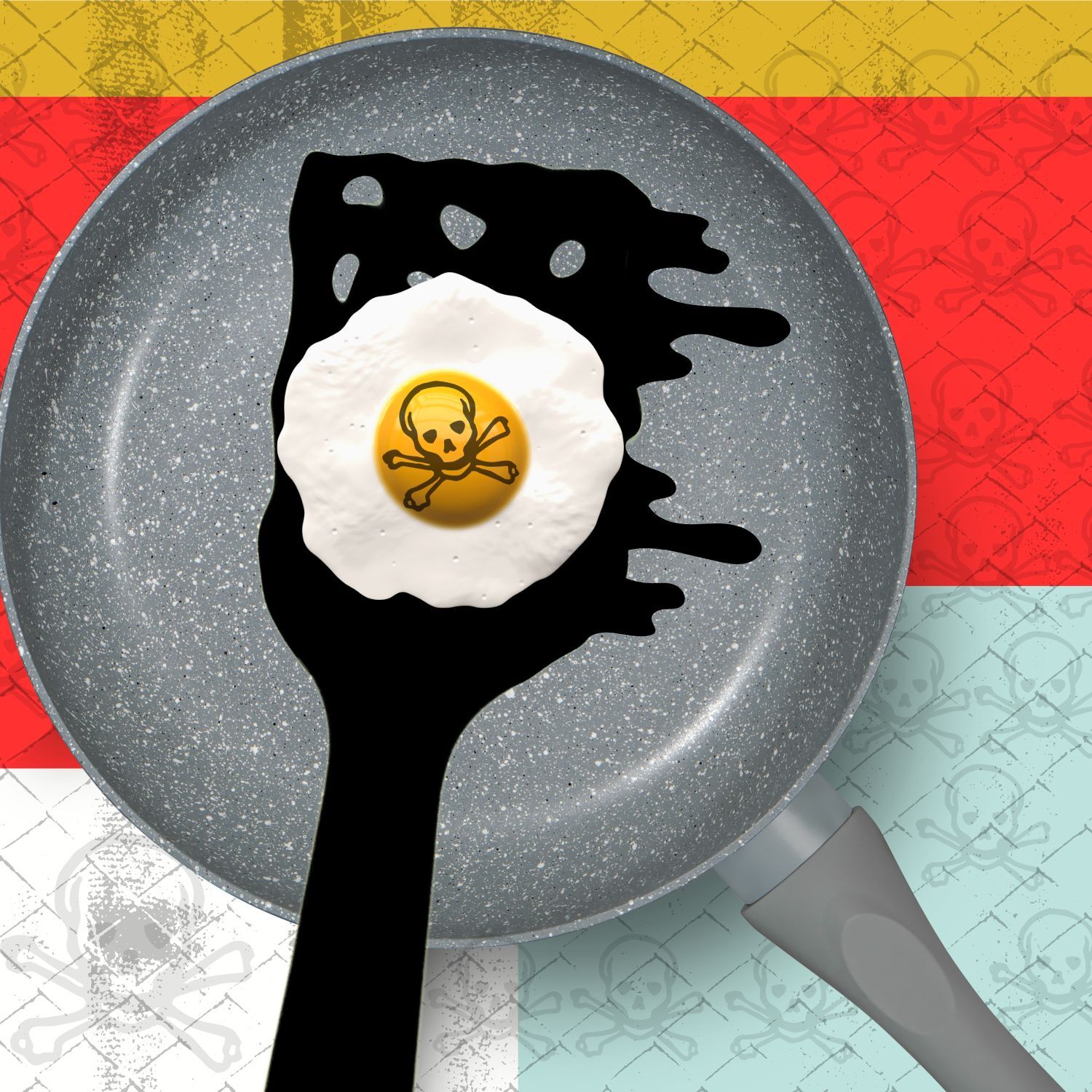Update (January 9, 2025): The study cited in this article had a mathematical typo in calculating the exposure risk of a harmful chemical called deca-BDE, inflating the number by tenfold. As a result, some news outlets have canceled the study. But the recommendations to avoid black plastic in the kitchen remains, according to co-author of the study, Megan Liu: “Due to our miscalculation (not included in the abstract, highlights, or conclusion) the estimated exposure of one of the chemicals detected, deca-BDE,��in kitchen utensils is an order of magnitude lower than we originally reported. But our recommendation to use alternatives such as wood and stainless steel, especially with kitchen utensils, remains. Deca-BDE is a banned flame retardant that can still pose health hazards, especially to children. Plus, our study also found 10 other harmful flame retardants in certain black plastic items. None of the chemicals tested are regulated in recycled plastics. And they should be.”
Fair warning: if you invite me to dinner at your house and I spy a black plastic spatula in the utensil canister on your counter, I’m confiscating it. Not because I’m a thief, but because I care about you. I don’t want black plastic anywhere near your scrambled eggs or anything else that goes into your mouth.
A published in Chemosphere, a scientific journal covering environmental chemistry, sounds the alarm on the toxicity of black plastic, which is commonly used in kitchen utensils, take out containers, sushi and meat trays, and even childrens’ toys.
The study tested 200 household items for bromine, a chemical that indicates the presence of dangerous brominated flame retardants (BFRs). Of the 87 items that contained bromine, the 20 with the highest concentrations were then analyzed for BFRs. 17 came back positive. The items with the highest levels of BFRs: a take-out sushi tray, a black plastic spoon, and a children’s pirate necklace.
Climate Action Tips
Get more sustainability tips in our Climate Neutral-ish newsletter.For me, the scariest part of this discovery is that BFRs have been banned in the U.S. since 2004. So why are they showing up in products on our shelves today? It’s because we’ve recycled BFRs into places that they were never intended to go and it raises big questions about the safety of plastics recycling in general.

Is It Safe to Use Black Plastic?
The growing consensus among experts is that black plastic poses risks to human health and the environment. BFRs are linked to including endocrine, liver and kidney toxicity, cancer, adverse effects of fetal and child development, and more, according to The National Institute of Health Sciences.
“Our study showed that BFRs (including one called deca-BDE which has been banned in the U.S.) still exist in a percentage of new black plastic household items,” says Megan Liu, co-author of the study and the science and policy manager for , an environmental health and advocacy nonprofit.
The problem, she says, is that BFRs is a broad class of chemicals and only a handful of them have been outlawed. (This is a common challenge with chemical regulations, as I discovered when researching an article on PFAs, aka forever chemicals.) When a specific iteration within a large class of chemicals is banned, companies often switch to a similar—and equally harmful—one. It’s been likened to a dangerous game of whack-a-mole in which companies technically stay compliant but exacerbate the danger.

Liu says black plastic contamination traces back to electronics or e-waste recycling. For decades, BFRs have been added to electronics to prevent fire-related injuries and damage to property. BRFs—both the banned ones and their cousins— are still in circulation as old and new e-waste makes its way into the recycling system.
“Without regulations to end the use of harmful chemicals and prevent them from being recycled, toxic flame retardants will continue to enter our homes through the back door and show up in products,” says Liu.
Plastic Was Never Meant to Be Recycled
This black plastic study reveals an inherent and much deeper problem with our plastic recycling system. Despite how desperately we want to recycle the plastic we consume, it was designed to be durable by its very own founding fathers.
Consider this�� against Coca-Cola and PepsiCo. The suit alleges that the mega companies contributed to the plastics crisis by misleading consumers with advertising that praises the recyclability of single-use beverage bottles. “Except at the margins,” the suit reads, “it is theater—a show designed to make consumers feel good about, and be willing to, consume unprecedented volumes of defendants’ single-use plastic.”
But don’t take my word for it. Take it from one of the early champions of disposable packaging. At a 1963 plastics conference, Lloyd Stouffer, editor of Modern Plastics magazine, gave a horrifyingly��celebratory speech about the disposable nature of their darling packaging material and all the money it would make them.
“The package that is used once and thrown away, like a tin can or a paper carton, represents not a one-shot market for a few thousand units, but an everyday recurring market measured by the billions of units,” he espoused. “Your future in packaging does indeed lie in the trash can. You are filling the trash cans, the rubbish dumps and the incinerators with literally billions of plastics [sic] bottles, plastics jugs, plastics tubes, blisters and skin packs, plastics bags and films and sheet packages–and now, even plastics��cans,” he said. I picture him raising his fist in celebration, dollar signs in his eyes. “The happy day has arrived when nobody any longer considers the plastic package too good to throw away.”
You can read the text of for yourself, and you should because it will blow your mind. It reads like an SNL parody. He waxed on and on about how all the different types of throw-away plastic–jars, bottles, cigarette boxes, shrink wrap–were replacing reusables at a staggering rate. All while saving companies millions.
In this room full of industry titans, Stouffer was leading a pep rally for pollution.
Jackie Nuñez, advocacy and engagement manager for Plastic Pollution Coalition, summarizes the fundamental in four words: “Toxics in and toxics out.” In other words, that should be taken out of the recycling system all together, and dealt with as the toxic/hazardous waste that it is.
“It’s ludicrous,” says Nuñez. She even takes issue with the word “recycling” when it comes to plastics. She argues that when plastics are reclaimed and melted down, they deteriorate and lose some of the function they were originally designed for. “Every time you heat up plastic, the chemical bonds weaken,” she says. “To turn it back into usable new plastic, virgin plastic must be fed in, perpetuating our hunger for plastic.”
It sounds like the evil twin of a sourdough starter that needs to be fed in order to rise.
Is It Better to Not Recycle Plastics?
Our long-term goal, according to both Liu, Nuñez, and many other environmental and health experts, should be to phase out plastic production.
According to Plastic Pollution Coalition, about 460 million metric tons of plastic are now produced annually. That number is expected to triple by 2050. Yet, ever made has been reclaimed. Recycling rates for other materials, like aluminum, glass, and paper, are far higher.

“This black plastics study brings to light a disturbing fact about plastic recycling,” says Liu. “We can’t recycle our way out of the toxic plastic crisis. It is critical that governments adopt strong restrictions on harmful chemicals and plastics to protect the health of all people.”
While Nuñez agrees that we need strong policies and regulations, and that polluters should pay for the harm they’ve done, she does not think that we should just give up and stop recycling.
“Yes, consumers should still separate out and sort their plastic according to their local guidelines,” says Nuñez. “This is our current, albeit flawed, system. It’s not broken, it’s just contaminated with plastic.”
How Can You Be Safe from Plastic?
While it’s clear that single-use plastic is bad for us and for the planet, it’s also, very hard to avoid it in today’s world. That�� said, here is an��ever-growing list of ways that I try to keep myself and my family safe from its harmful effects.
- Speak up! This is perhaps the most important thing you can do to create meaningful change. Ask your grocers and favorite restaurants to offer packaging choices that are nonplastic. Ask them to allow and embrace reusables. Write to your legislators and local officials and tell them we need to break free from plastic. Vote for politicians who support these views.
- Throw out your plastic kitchen utensils. This includes spatulas, spoons, strainers, bowls, cups, cutting boards, and containers.
- Shop smart. When you have the choice between plastic and any other material, steer clear of plastic. This is especially important when it comes to food packaging and anything that touches food.
- Adopt a reusable mindset. Carry��your own water bottle. Bring your own cup to the coffee shop. Even tote your own container to restaurants for leftovers. This not only keeps you��safe, it sends a message to the proprietors that you do not approve of single-use plastic.
- Know your local recycling guidelines. Really know them. Call your town or local recycling center and ask specific questions about exactly what they’ll take and won’t take.
- Sign petitions. It’s a fast, easy way to be part of collective action. Here are two you can sign today in minutes: supports federal legislation that would limit plastic pollution. supports a global treaty with the same goals.

Kristin Hostetter is ���ϳԹ���’s sustainability columnist. She is on a perpetual quest to banish plastic from her life. Follow her journey to live more sustainably by for her twice-monthly newsletter.


